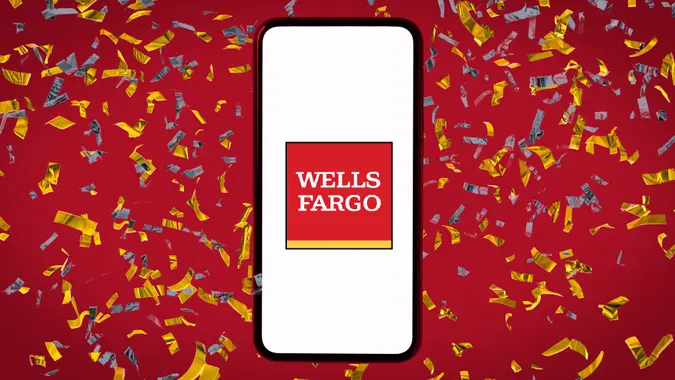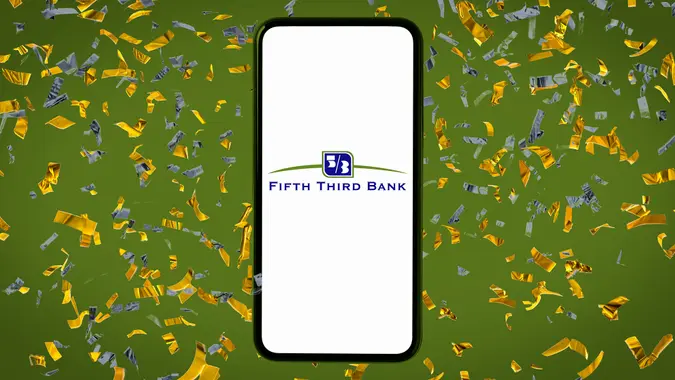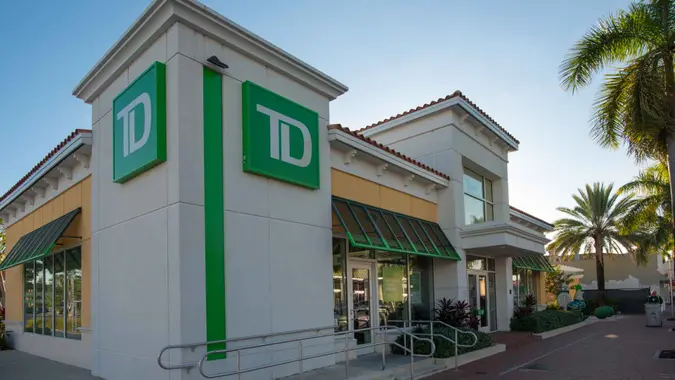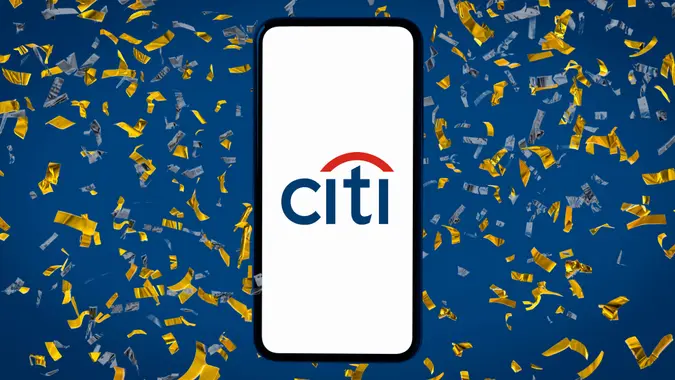Common Bank Fees and How To Avoid Them

Commitment to Our Readers
GOBankingRates' editorial team is committed to bringing you unbiased reviews and information. We use data-driven methodologies to evaluate financial products and services - our reviews and ratings are not influenced by advertisers. You can read more about our editorial guidelines and our products and services review methodology.

20 Years
Helping You Live Richer

Reviewed
by Experts

Trusted by
Millions of Readers
Getting hit with an unexpected banking fee can be frustrating. If you’re not careful, these fees can add up quickly. Some of these fees, as in the case of overdrafts, can even compound. Fees are more common than you might think and banks may charge you when you aren’t expecting it.
Common Bank Fees
Whether you have an account open with a brick-and-mortar bank or prefer online banking, you might not be expecting some of the sneaky fees banks can charge. Be aware of these common bank fees.
- Account maintenance fee: This is typically a monthly service fee that can be avoided by maintaining your account’s required minimum balance.
- ATM fee: You will incur ATM fees if you use ATMs outside of your bank’s network. To avoid this fee use only your bank’s ATMs.
- Excessive transaction fees: The federal limit for withdrawals on your savings account is six free withdrawals per month. You’ll likely be charged a fee for any transactions exceeding this so plan on only six or fewer per month to avoid this fee.
- Overdraft fee: You may incur overdraft fees if you have insufficient funds for the amount of money you spend or withdraw. To avoid this fee you can sign up for overdraft protection or even set up notifications for your bank account so you know how much you have at all times.
- Wire transfer fee: Wire transfers are a quick and convenient way to send or receive money but you’ll often be charged a service fee for them. To avoid these fees, you can set up direct deposit or use a regular transfer that will clear in a few business days without charging you a fee.
8 Ways To Avoid Bank Fees
Most Americans waste around $100 a year on bank fees. Here are eight tips on how you can keep that money in your account, where it rightfully belongs.
- Set up direct deposit
- Maintain the required minimum balance
- Use your bank’s ATMs
- Track your spending habits
- Sign up for overdraft protection
- Enroll in paperless statements
- Avoid unnecessary wire transfers
- Set up alerts and notifications
1. Set Up Direct Deposit
If your company offers direct deposit for your paycheck, it may pay to take advantage. It’s both intelligent and convenient. Your money is immediately available in your bank account on payday, and you don’t have to wait in line at the bank to deposit your check.
In addition, many banks waive monthly fees if you set up direct deposit with them.
2. Maintain the Required Minimum Balance
Nowadays, it’s common for banks to charge you a monthly fee to maintain your checking account. For example, Bank of America, Member FDIC, charges up to $12 per month for its Advantage Plus Banking® account. However, you can avoid this fee entirely if you maintain a minimum daily balance of $1,500 or more.
3. Use Your Bank’s ATMs
The largest banks own and operate thousands of ATMs across the country. If you bank at one of them, odds are you can easily find a nearby ATM when you need cash. However, most banks will charge you an extra fee if you use an ATM operated by a different bank. You’ll also typically pay a fee using an ATM kiosk at a gas station. For example, Chase charges $3 per withdrawal at a non-Chase ATM in the U.S., Puerto Rico and the U.S. Virgin Islands.
If you frequently take cash out, these fees can add up. You can avoid this by always using your own bank’s ATMs or using a bank that reimburses ATM fees.
4. Track Your Spending Habits
One of the most common bank charges is the non-sufficient funds fee. Banks usually will charge you a fee when you use your account and don’t have enough money to cover a charge. Such fees can happen unexpectedly with recurring payments and subscriptions.
For example, Wells Fargo charges $35 for each payment in an overdrawn status. These charges can add up quickly if multiple overdrawn payments occur in a short period. You can avoid overdraft charges by keeping an eye on your account balance.
5. Sign Up for Overdraft Protection
Even if you watch your balance closely, overdrafts can still happen. However, many banks offer an overdraft protection service to save you from those fees. To take advantage of the service, you link up another account — often a savings account — to your checking account. The bank will automatically transfer enough to cover any overages. Some banks, like Ally Bank, offer this transfer service at no additional cost, while others charge a smaller fee than the overdraft fee.
6. Enroll in Paperless Statements
Paper is expensive and bad for the environment. Electronic statements can be much more convenient than paper copies. Many banks charge extra if you want paper statements.
For example, Bank of America charges $5 each for statement copies. You can avoid this type of charge by signing up for electronic delivery and viewing your statements online. If you need hard copies, you can download and print them yourself.
7. Avoid Unnecessary Wire Transfers
Wire transfers can be quick and convenient compared to traditional bank transfers, which take up to three business days to complete. However, there’s a cost for the speed and convenience.
For example, Chase charges up to $35 per domestic wire transfer and even more if you want to send a wire internationally. Sometimes, wire transfers are required. But if you can use a regular transfer, you can save money. You might want to explore some services that now offer no-cost personal transfers, like Zelle or Venmo.
8. Set Up Alerts and Notifications
One of the best ways to avoid unnecessary charges is to know what’s happening with your account. Most banks offer alerts and notifications for various activities on your account. Sign up for them and keep those extra fees away.
Final Take
Though you should plan for common bank fees, there is no reason you have to consistently pay them if you know how to avoid them. Some banks even offer no-fee accounts to help you keep more of your money. Often, these accounts don’t charge fees for bill pay, ATM usage or other services.
FAQ
Here are the answers to some of the most frequently asked questions about bank fees.- What are four common bank fees?
- Four common bank fees include, but are not limited to, service fees, maintenance fees, excessive transaction fees or overdraft fees.
- What are typical bank fees?
- Some typical bank fees include overdraft fees, account maintenance fees, insufficient funds fees, excessive transaction fees, out-of-network ATM fees or wire transfer fees.
- What is a monthly bank fee?
- A monthly bank fee, often referred to as a maintenance or service fee is a charge you incur for using this account. This can typically be avoided if you maintain the required minimum balance of that account each month.
- What are ways to avoid paying bank fees?
- There are many ways to avoid paying bank fees including the following:
- -Set up direct deposit
- -Maintain the required minimum balance
- -Use your bank's ATMs
- -Track your spending habits
- -Sign up for overdraft protection
- -Enroll in paperless statements
- There are many ways to avoid paying bank fees including the following:
Scott Jeffries contributed to the reporting for this article.
Data is accurate as of March 16, 2023, and is subject to change.
Editorial Note: This content is not provided by any entity covered in this article. Any opinions, analyses, reviews, ratings or recommendations expressed in this article are those of the author alone and have not been reviewed, approved or otherwise endorsed by any entity named in this article.
Editorial Note: This content is not provided by Chase. Any opinions, analyses, reviews, ratings or recommendations expressed in this article are those of the author alone and have not been reviewed, approved or otherwise endorsed by Chase.
 Written by
Written by  Edited by
Edited by 

























